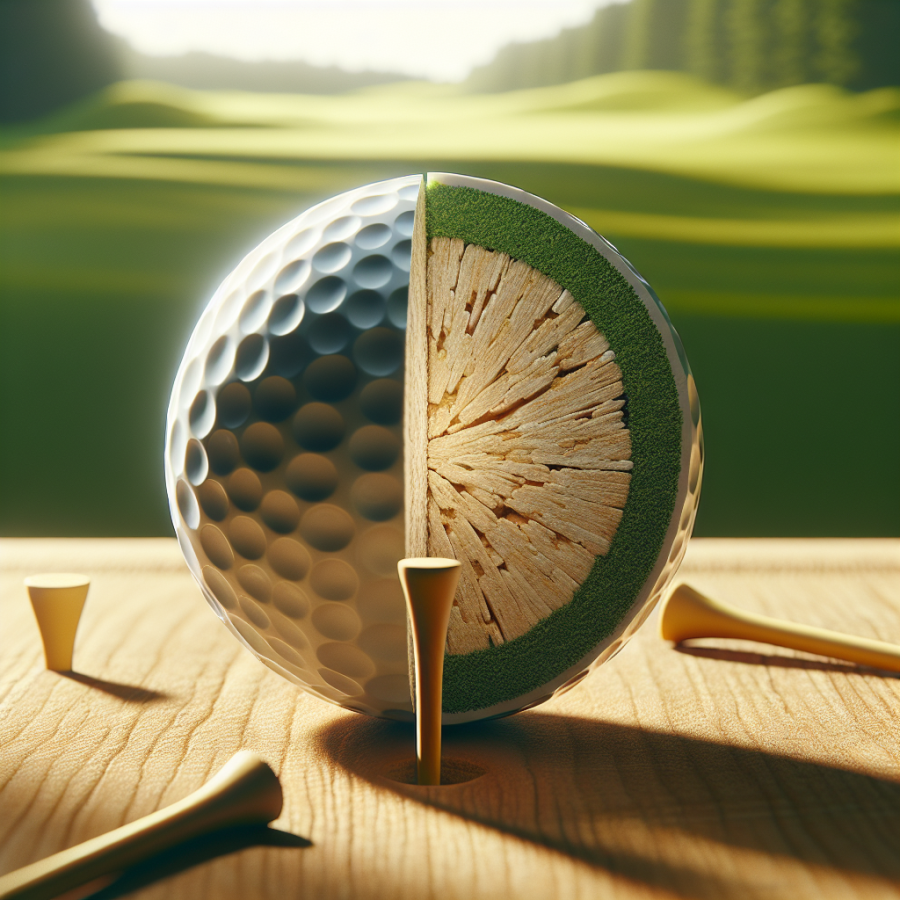Understanding the Composition of Golf Balls: Common Misconceptions
Understanding the composition of golf balls is pivotal, not only for golf enthusiasts but also for anyone aiming to grasp the intricacies of the game. Unraveling the numerous myths surrounding the interior design of golf balls helps to appreciate the craftsmanship that goes into producing these small, yet significant pieces of sports equipment.
One common misconception is that all golf balls are the same on the inside. This, however, is far from the truth. Golf balls come in different types, each with a unique design to suit a specific function or player skill level. For instance, two-piece golf balls, with an outer cover and a solid core, are best suited for beginners, while three-piece golf balls or those with multilayers are designed for more experienced players demanding spin control and feel.
The second misconception implies that the golf ball's cover material does not impact its performance. Contrary to this myth, the cover material greatly affects how the golf ball behaves upon impact. Surlyn, a hard resin cover, delivers durability and distance, making it popular among average golfers. In contrast, urethane-covered balls, which are softer, provide better spin control, a key attribute professional golfers are looking for.
Another fallacy is the belief that the spin rate of the golf ball is determined solely by the golfer's swing. While the swing plays a critical role, the ball's construction also adds to the equation. Different balls have different dimple designs and patterns, which affect the aerodynamics and, ultimately, the spin rate. Notably, the dimples do not only provide lift but also induce drag, allowing the golf ball to maintain a stable flight path.
There's also a misconception that golf balls with more layers deliver better performance. Extra layers can indeed provide seasoned players with greater control and optimization. However, this might prove counter-productive for high-handicappers and beginners, who might not yet have the control level and swing speed to take advantage of the multilayer design.
Lastly, some believe that the interior of a golf ball is filled with a liquid core. This stems from an old design from the late 19th and early 20th century, which had liquid-filled centers. Modern-day golf balls, however, do not contain liquid. The interiors are made from solid rubber or similar materials, providing the desired bounce and resilience.
Read also:
Unraveling the Dynamics and Strategies of Rugby: A Comprehensive Guide
Dispelling the Myths: Facts about Golf Ball Interior Construction
Many golfers often overlook the critical aspect of golf ball interior construction, believing in various myths that are far from reality. This post aims to dispel several of these misconceptions and present some facts about golf ball interiors that everyone in the sport should know.
Myth 1: All Golf Balls Are the Same on the Inside
One common myth is that all golf balls have the same interior construction. However, the truth is that golf balls have different layer constructions depending on their intended use, the player's skill level, and the overall ball performance. For instance, a two-piece golf ball is primarily designed for beginners and high handicappers, offering more distance but less control. In contrast, the three-piece golf ball offers a better spin control, making it suitable for intermediate and professional golfers.
Myth 2: More Layers Mean Better Performance
Many people believe that a golf ball with more layers signifies better quality and performance, but it's not always the case. For example, while a five-piece golf ball provides more spin separation and optimum performance for experienced players, a two-piece ball might be a better choice for beginners due to its stress tolerance and durability.
Myth 3: The Core of the Golf Ball Defines Its Performance
The popular myth that the golf ball's core primarily defines its performance is partially true. While the core affects the initial velocity and the ball's overall distance, the cover material and the number of layers also play a significant role in determining ball control and spin.
Myth 4: All Golf Balls Have a Liquid Center
This myth probably comes from the old Balata golf balls, which had a liquid-filled center. But in today's golf balls, the most common type of core is a solid rubbery compound. In fact, the liquid core ball has been largely replaced by newer "multi-layer" balls, which are specifically engineered to offer improved performance characteristics on modern golf courses.
Myth 5: The Harder the Core, The Farther the Ball Travels
Many golfers believe in the simple equation: the harder the core, the farther the golf ball travels. However, this is not entirely accurate. The distance a ball travels depends on the combination of the core hardness, the number of layers, and the type of cover. A softer core absorbs the club's impact and can result in a straighter and longer distance.
By understanding the truth behind these myths, golfers can make more informed decisions when selecting golf balls.





